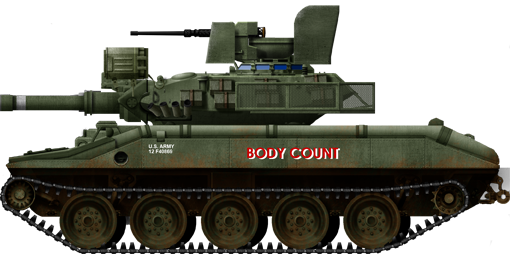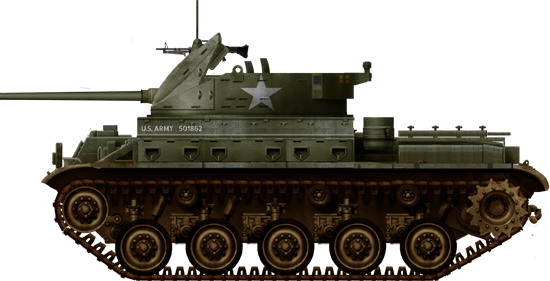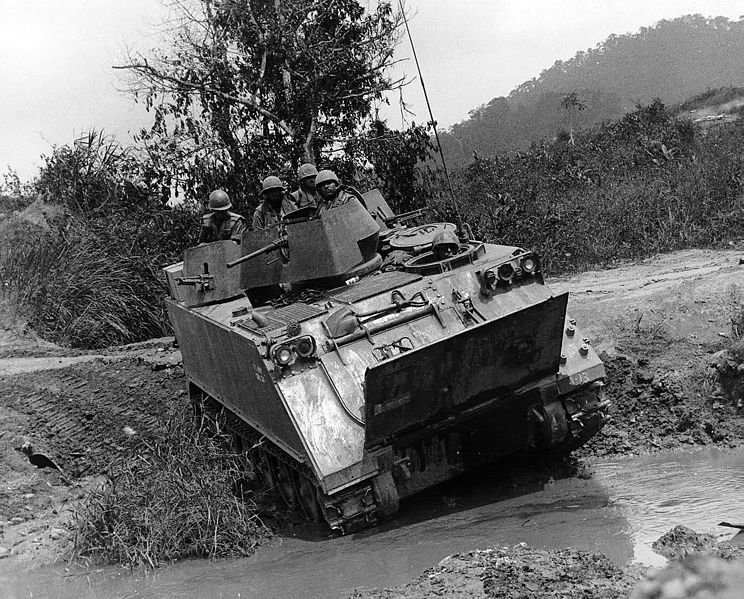Main Battle Tanks
- M46 Patton
- M47 Patton
- M48 Patton
- M60 Patton III
- M1 Abrams
- M103 Heavy Tank
- M41 Walker Bulldog
- M551 Sheridan
- Stingray
- M41 HMC Gorilla
- M44 SPH
- M55 SPH
- M107
- M110
- M109
- M270 MLRS
- M42 Duster SPAAG
- M247 Sergeant York DIVAD
- M752 MGM-52 TEL
- M44 APC
- M59 APC
- M75 APC
- M113 APC
- M114 APC
- M2 Bradley
- M3 Bradley
- M56 Scorpion
- M67 "Zippo"
- M60A2 ‘Starship’
- LVTP-5
- LVTP-6
- LVTP-7
- M113 C&V Lynx
- M163 VADS
- M901 ITV Hammer
- M577 CP
- M113 Fitter
- M806 ARV
- M125 Mortar Carrier
- M132 Flamehrower
- M48 Chaparral
- M548 Tractor
- CGC M706
- LAV-25 Stryker
- Dragoon 300
- LAV-100
- LAV-300
- HMMWV
- T71
- HTSV HIMAG
- T48E1
- T58
- T77
- XM 701
- XM 734
- XM 800
- XM 765
- XM 723
- XM2/3
- Amphibious Cargo Carrier M76 Otter
Light Tanks
Self-Propelled Artillery
APCs/IFVs
Misc. Vehicles
Wheeled Combat Vehicles
Prototypes
Unarmored vehicles
The US Army in Germany 1945-1960s
Just like for the Soviet Army, the wartime experience weighted considerably over the tank tactical doctrine of the US Army, as well as for the USMC. Considerable forces were still mobilized, mostly in Germany. These were the 6th and 12th army corps, historically those which first invaded the German territory in the spring of 1945. These units comprised the bulk of US tank forces, with a wide array of recent Sherman types, M26 Pershings and M24 Chaffee.
They were spread out over a wide territory, mostly in the southern part of Germany and Austria and with the later reorganization of the occupation zones, the US Forces stationed in West Germany came into a single command, the USAREUR, first designated The European Theater of Operations, U. S. Army (ETOUSA), then USFET and EUCOM. It was commanded by for logistics and administration was Major General John C.H. (“Court House”) Lee. After may 1945, the HQ was moved from Versailles to moved to the I.G. Farbenindustrie Building in Frankfurt, then Heidelberg and with the merger later between the British and US zones of occupation, the HQ was moved again to Stuttgart in 1949. With the following events which raised tensions with USSR (the Berlin blockade, the communist coup in Czechoslovakia, first Soviet nuclear detonation, and invasion of Korea), the Seventh U. S. Army was activated at Stuttgart in late November 1950, comprising five full armored divisions.
When the Berlin wall was erected in august 1961 by soviet troops, the 3rd Armored Cavalry Regiment was deployed to Europe along with additional support units to protect the flow of refugees, while the 1st Battle Group, 18th Infantry (Reinforced) was also sent to west Berlin. By 1962 when the crisis was at the highest, no less than 277 342 personnel were stationed in Germany. The former US-British zone of occupation was further extended when the French occupation zone was evacuated due to De Gaulle’s decision of a NATO withdrawal in 1967. By 1961, US Forces in Germany were the first to receive the new M60 tank, but also the M113 armored personnel carrier, M151 truck, M14 rifle and M-60 machine gun. However, due to economic problems, the command started rotating battle groups and battalions to Europe to short tours.
NATO (1949)
The rôle of the Unites States in the constitution of the North Atlantic Treaty Organization is so mandatory that this subject needed to be treated on this page. The prelude was signed on march 1948 in Brussels, the treaty comprising five countries (Great Britain, France, The Netherlands, Luxemburg and Belgium). When signed with the support of the Congress in Washington by april 1949 the treaty really became “Atlantic” integrating the Canada, Portugal, Italy, Norway, Denmark and Iceland. It was also at the beginning to keep Germany under control – “to keep the Russians out, the Americans in, and the Germans down” (Lord Ismay, first head of NATO). But with the events unfolding in 1960, West Germany was in turn integrated
This collective defence system was at first largely supplied by US equipment, concomitant to the Marshall aid, as it was seen at first as the way to have a common chain of command helped by the standardization of standardization of allied military terminology, procedures, and technology of the western nations (STANAG) at least until some of these countries were able to build their own equipment again (Great Britain was equipped domestically since the beginning, with the exception of the nuclear program). This was the case for example for the 7.62 NATO cartridge, and in the 1950s, the M47 Patton was really the standard European tank. But this changed in the 1960s when Germany introduced the Leopard I and the French the AMX-30. At the same time, the British Royal Ordnance L7 tank gun also became a standard. The use of US tanks was gradually reduced in Europe to Belgium, Austria and Italy and later most nations in NATO would adopt the Leopard I/II as their standard equipment.
One country in, one out. West Germany joined the organization in may 1955, with the context of the Korean War. The Bundeswehr, fully and well rearmed formed the bulk of the first line of defense against the Warsaw Pact in Europe (signed right after the event), helped by the presence of US and British military units. By 1957, massive common exercises started, like Operation Counter Punch, Operation Strikeback, and Operation Deep Water, occupying a wide area from Norway to Turkey. TheGermann Leopard tank was seen as a new standard, that led not only to a wide scale adoption, but The progressive effect of French withdrawal from NATO in 1967 had some impact, however.
De Gaulle’s decision was hard to perceive and many saw this a major breach in the unity of Western Europe. This started with the Mediterranean Fleet withdrawing in 1958, then ban on nuclear weapons on French soil in 1959, then US bases in France were all evacuated from 1966 to 1967 and the SHAPE command was relocated to Casteau near Mons in Belgium. However after de Gaulle’s departure from power, tensions gradually eased, as France remained a member of the alliance and by the Lemnitzer-Ailleret Agreements it was agreed how the French force would reintegrate NATO’s dispositive in case of an eastern invasion of Europe.
The Korean war (1950-54)
The US and USMC formed the bulk of the coalition sent to help the retreating South Koreans.
Situation in the 1960s
By the aftermath of the Korean war and the signature of a war armistice in 1953, tensions began to decrease in Europe and the enlisted personnel in Germany was still about 13,500 personnel, their equipment was upgraded with the M48 tank, M59 armored personnel carrier, and tactical nuclear weapons.
In Germany, in 1969, the first REFORGER exercise took place, 12,187 dual-based troops were deployed in the field, most coming from the USA, to show the NATO’s resolve and test the metal of a quick deployment force.
The middle east: 1967 and 1973 wars reports.
1965-1973: The Vietnam war
Since the present chapter would be too short to try to depict the whole war, already well covered by books and documentary, we will better to concentrate here on tanks engagements of the war the consequences for the armoured corps in general ad the Army in general. The conflict started in 1945 as France, now freed from German Occupation and having recovered its sovereignty returned to its Indochinese colonies to put an end to a nationalistic guerilla led by Ho Chi Minh. Already in 1941 a Viet Minh Common front was supported by Nationalist China and the US to fight against the Japanese occupation. However in 1950 a state of Vietnam back by France was created, led by former Emperor Bảo Đại.
As the conflict developed and french involvement grew accordingly in size, US aid came out with the Military Assistance and Advisory Group since the NVA, supplied and ideologically aligned by the Soviet block and nearby China (PRC) became a regular army. Any more American involvement at the last stage of the war (Dien Bien Phu, 1954) was refused by Eisenhower, fearing escalation and because of the ongoing operations in Korea. Vietnam gained its full independence after the Geneva Conference, as well as Cambodia and Laos and the french leaved definitely the area. This was the end of the “first Indochina war”
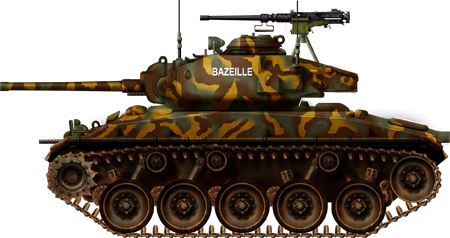
French M24 Chaffee of the 1st Regiment, Chasseurs à Cheval, Dien Bien Phu, 1954
From 1953 and 1956 a serie of agrarian reforms translated into significant political oppression with executions along the way and tensions rose between the north and south VN. Ngô Đình Diệm became prime minister in 1954 and the first elections were set up, monitored by international delegation, that Ngô Đình Diệm won against Phạm Văn Đồng representative ofthe Viet Minh. However Diệm secured his way to power, eliminating any political opposition in the south and launching operations against religious groups. In 1955 this led to a partition between south and north Vietnam. But the political elites of the Republic of Vietnam (ROV) soon alienated the population, to the point of raising an insurrection, the National Liberation Front.
After North Vietnamese invasion of Laos, communist infiltration began in the south in 1961 and rose to 40,000 combatants. Situation degenerated and in 1962 newly-elected president John F. Kennedy allowed some limited military aid, materials and advisors to the ARVN. But the poor performances of the South Vietnamese army mined by desertion, corruption and nepotism led to a CIA-led operation for the ousting and assassination of Ngô Đình Diệm. Escalation began under Lyndon B. Johnson from 1963 to 1965 as what is now today as the Vietnam war or second Indochina war.
Tanks involvements in the Vietnamese war
Although the matter was already covered with the M48 Patton, let’s recall that the Viet Cong for the first time defeated a strong ARVN force at Binh Gia, in a conventional battle. They used in particular Chinese or Soviet-supplied T-34/85s. The armour branch of the PLAVN was created in 1959. During the conflict many of these aging T-34s were shipped back to USSR and upgraded with T-54/55-type road wheels and a newer type 10RT radio. Until a more massive US involvement led by general William Westmoreland, ARVN tanks were of the M24 Chaffee model, unable to face the better armoured and better armed T-34s.

M41 Walker Bulldogs of the ARVN in Saigon
From 1963 they were gradually replaced by the more capable M41 Walker Bulldog. The PLAVN was also provided with Soviet-built amphibious PT-76s, Type 62 light tanks and Type 63 SPAAGs. But more crucially they began to receive T-54/55s which took part in the operations of the latter part of the conflict, including the last offensive of 1973. Type 59s were also supplied by China, possibly first deployed for the Sino-Soviet border conflict in 1969, but more likely in the Sino-Vietnamese war of 1979. It seems also that a few M4A3 medium tanks could have been used at the beginning of the conflict by US Forces.
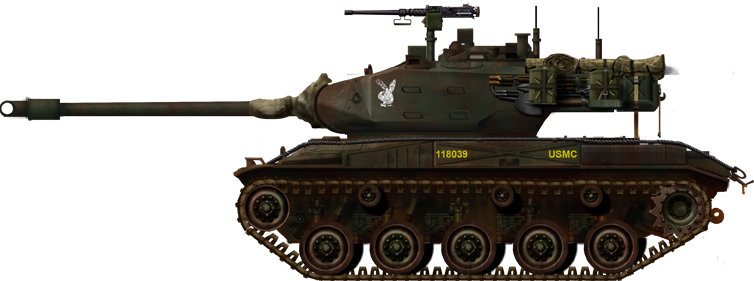
American M41A3 of the USMC. Over 600 were deployed in infantry support
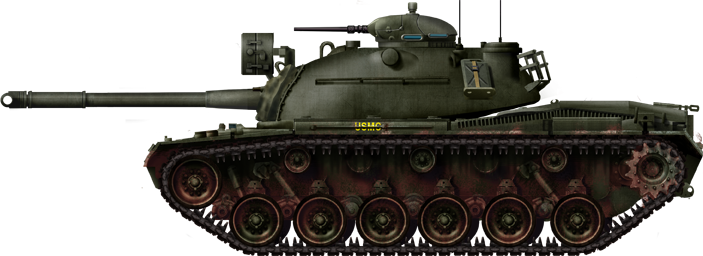
M48A2 of the USMC
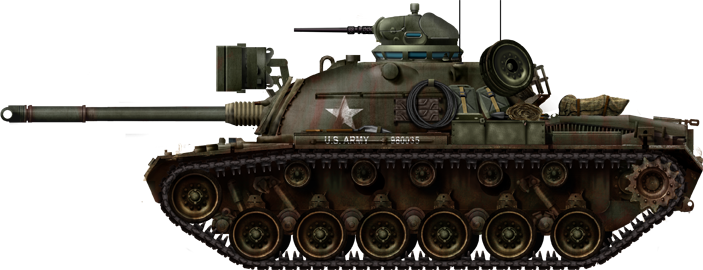
M48A3 1st tank batallion, 1966.
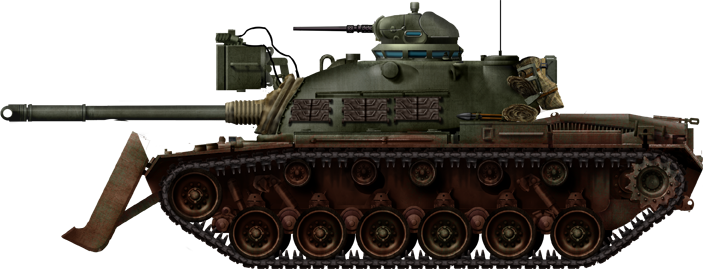
M48A3/E8 Tear Gaz launcher & Dozer, 1st Infantry, Phuoc Minh
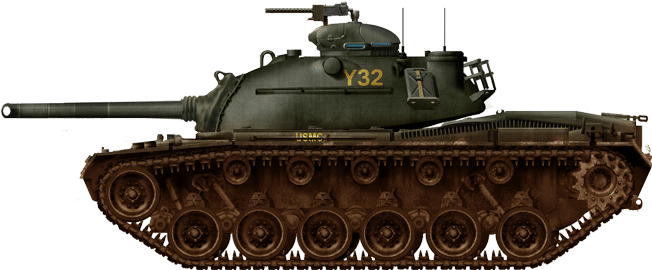
M67 Zippo flamethrower tank at Da Nang
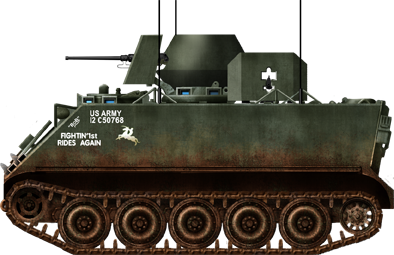
M113 ACAV, the workhorse of search and destroy operations

LVTE-1 “potato digger”

Australian Mark V in 1968. Another source points out the Royal Australian Armoured Corps used the Mk.XIII
Until the great offensive of 1969, the North Vietnam used its T-34s in support of the infantry. Tank battles never happened at least against US Forces, although ARVN Chaffee could have occasionally met some.
Battle of Ben Het (Têt Offensive)
This was probably the only tank-on-tank engagement of the whole war. The Vietnamese operations involved a southeastern attack of US Forces well beyond the DMZ, using the Ho Chi Minh trail.
On March 3, 1969, NV forces of the 202nd Armored Regiment (4th Armored Battalion) assaulted the American 1st Battalion (69th Armor) near Ben Het in South Vietnam, a training camp with 10-19 PT-76 tanks. Opposite were M48A3 Patton tanks of which one was hit by a PT-76 without much damage while three PT-76s were destroyed two by gunfire and one by a mine.
Battle of Lam Son (1971)
The bulk of armoured ARVN units saw heavy action in Operation Lam Son 719, clashing with the 308th Division supported by Soviet-built PT-76 and T-54 tanks, and for the defense of FSB 31, the ARVN destroyed 17 PT-76 and six T-54 tanks for three of its five M41 tanks and 25 APCs lost in action. However during the retreat from Laos, with objectives reached, the ARVN task force lost 60 percent of its tanks and half of its APCs as it became a rout.
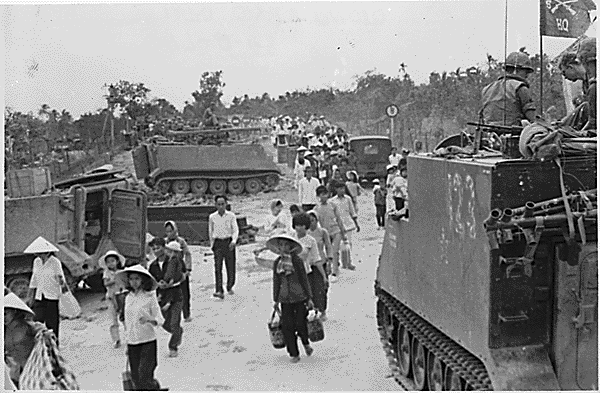
M113 in My-Tho, 1968
Sources
The T-34 in Vietnam
https://www.tanks.net/vietnam-war-tanks/index.html
Nomenclature Change
On the 7th of November 1950, the United States Ordnance Committee instigated a change in nomenclature for tanks in the US Military. It was decided that weight designations (Light, Medium, Heavy) were no longer suitable due to changes in the way tanks were developed and employed on the battlefield, and the varying calibers now available. The caliber of the gun replaced the weight designation. For example, the Heavy Tank M103 would now be known as the 120mm Gun Tank M103, and the Light Tank M41 Walker Bulldog would now be known as the 76mm Gun Tank M41 Walker Bulldog.
Heavy tanks, from the M26 to the M103 (1959)
M103 preserved at Fort Lewis. Only 300 of these 65-ton monsters were built, mostly used by the USMC. Their main purpose was to bear a 120 mm gun M58 main gun able to deal with any Soviet tank of the time. However mobility was a major concern (both range and speed) and the rifled gun fired a separate-loading round that imposed a second loader, lowering the rate of fire compared to other US tanks.
M26 (1944)
Later classed as a medium tank according to the new ordnance nomenclature, the M26 was a revolution. The war boosted innovation just by the examination of cold losses statistics, but that took time. The M26 did saw action, less than the M24, though, in Germany, and despite being few in numbers stood their ground against the most feared Tiger II, even much rarer, but how so effective. It was again in action (for those not converted into M46s) in Korea, and proved much more capable than the average Shermans, but their best and latest variant, the M4A3E8 “Easy Eight”.
M103 (1951)
A rare, but brave attempt back in the fifties, to match their best counterpart on the other side of the iron curtain, the M103 was tailored to operated a long barrel, high velocity 120 mm gun. It is now an evidence, but at that time, more of a challenge. With its standard 1st generation thick armor and cavernous turret, the M103 was something of an UFO on tracks, although it was very much based on standard components (those of the M48). Only a few were built, some derived into enhanced versions of the USMC (M103A2).
Mediums & MBTs: From the M46 to the M1
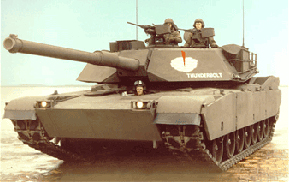
Two extremes in time that resumed the evolution of American tanks in the Cold War period. The Korean war M46 Patton was nothing less than a re-engineered M26 Pershing, but the M47, M48 and M60, although modernized, were all derived from this early (1944) design. The M1 Abrams on the other side was a complete re-thinking of the capabilities of an MBT, using the latest technologies and some DNA from the future German Leopard II through the visionary but costly common project MBT-70 project (1964-1970) canceled but that ended with the XM-1 in 1978.
M46 Patton (1949)
The M46 was a Korean war medium tank derived from a ww2-era heavy tank, the M26 Pershing. It was just re-engineered but shared the same generic attributes. Forgotten perhaps, as these were only used for a short time before the introduction of the M47. but they proved their mettle against all Chinese and USSR-built North Korean tanks.
M47 Patton (1951)
Despite their mass-production, the bulk of the Shermans remained one step behind upgraded designs of the Soviet Union notably the T-34/85, although less refined, representing a more potent combination of protection and firepower. Moreover, the new T-44 generation, armed with a 100 mm and announcing the T-54, caused even more concerns. The M26/46 gave the opportunity to create a relatively simpler, yet better standard medium tank. Probably the most interesting feature of the M47 was its rangefinder. The M47s compensated by this accuracy what they lacked in discretion and imposed themselves along with the plan Marshall and the creation of NATO, as the West tracked champion at that time. Ironically, this was also the tank that gave the impetus to the Europeans to develop their own MBTs in the 1960s.
Prototypes (1952-58)

T48E1, 1956 prototype before the standardization to the M103 heavy tank

T58, prototype (1957) with an oscillating turret and 155 mm gun, based on the chassis of the T43 tank.

T77 (1957)
The T77 was a 120 mm Gun Tank prototype designed in the US, using the T179 120 mm gun in an oscillating turret, which itself was mounted on a T48 chassis (The M48 Patton chassis prototype). Only two pilots were ever built, but the project was canceled in 1957 and the turrets were destroyed. Just one photo, a model, and blueprints exist. A rare prototype, it was to use a strange-looking turret with an autoloader. The principle of the oscillating turret was to allow the mounting of quite large guns in moderately small turrets, divided into a separate section that allowed traverse and elevation as well. It could have been possible therefore to fit such heavy tank gun on a medium one.

The HTSV/HIMAG (1978) was the alternative air-transportable light tank project in competition for the replacement of the M551 Sheridan. HIMAG meant HIgh Mobility AGility and HSTV(L) High Survivability Test Vehicle Lightweight. The latter was the product of the Tank-Automotive Research and Development Command in the mid-1970s but the prototype was completed later in 1980. Both prototypes shared the same high velocity 75mm main gun with autoloader and very low-profile turret. Indeed both the gunner and driver were located in the front of the hull in semi-reclined seating position, while the gunner has a remote control over the turret. The Sheridan Light Tank running gear was recalled but the propulsion was by a brand new AVCO Lycoming 650 gas-turbine 650hp gas-turbine engine which gave a top speed in excess of 85 kph. Specs were 8.53m in length overall, 2.79m of width and 2.41m in height for a weight of 20.45 tonne. The HIMAG had a more conventional tank hull but a Continental AVCR-1360 12-cylinder super-charged 1500hp diesel (top speed 100 kph) and a new hydropneumatic suspension. There was almost no turret and the gun was remote controlled and operated. Both prototypes were groundbreaking and extremely ambitious but never passed the initial tests stage.
LVTP-5

Half-forgotten today, caught between the famous LVTs of the ww2 pacific campaign, and the modern LVTP-7, actually the tip of this lineage, lays the LVTP-5, a brave attempt to modernize the concept of the armored, tracked amphibious landing vehicle. It was defined at the same period as FCM’s first armored personnel carriers in the early 1950s and entered service in 1956 with the USMC.
Far larger than previous models, it was fully enclosed, could carry 30-35 fully equipped marines, and was 9 meters long for almost forty tons. About 1120 were built, too late for the Korean war, they were seen extensively in action during the Vietnam war.
LVTP-7
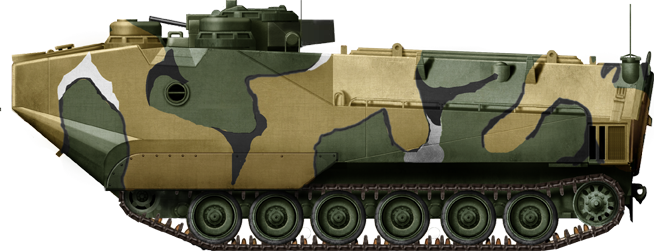
Officially designated today as the Assault Amphibious vehicle, the LVTP-7 was the last of a long lineage of amphibious tracked vehicles that goes back to the ww2 era Alligator (LVT-1). Contrary to the previous vehicles, and like precedessors of the cold war as the LVTP-5, the AAV is fully enclosed and protected against NBC threats. Smaller, it was designed in 1969 by the United Defence, a specialized branch of the FMC (Food & Machinery Corp.) in charge of the M113 and many derived vehicles. It shared indeed many parts with the latter, along with a light hull designed for maximum buoyancy. It is the main US Marines transportation system today (and they call it the “Amtrack”) still maintained by the U.S. Combat Systems. In 1982 the vehicle became the AAV-7A1 with a full modernization and life extension program.
M48 Patton (1954)
At the opposite, the M48 was more conservative, as it was seen merely as an improvement of the M47 Patton, with a new chassis and brand new turret. It had the same 90 mm gun, quite inferior on the paper to the T-62. However, by the 1960s, it received the license-built British Royal Ordnance L7 gun, a rifled, 105 mm of extreme accuracy and long range. Quite the opposite of the Soviet 115 mm. The only conflict where these two were found face to face was the Indo-Pakistani and 1973 (Yom Kippur) wars. The M48 soldiered for most of the cold war, the last in active service (in the USA) being deactivated in the 1990s. Others are still frontline worldwide. Just two years after the introduction of the M48, the M60, rearmed with the L7 gun and modified in several areas, gradually replaced the M48.
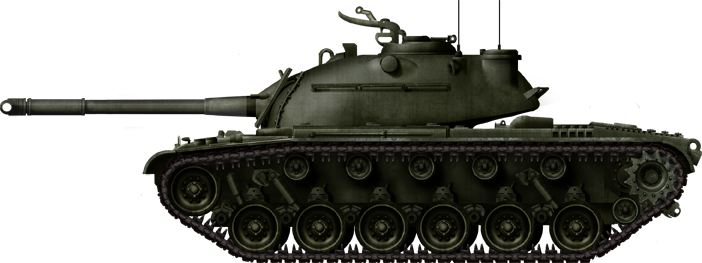
M60 Patton (1959)
The last tank of an era, a prelude for a new generation.
The M60, in the late 1950s, used a new gun, the famous L7 105 mm British Royal Ordinance which marked almost three generations of gunners in the West and even Chinese tanks. But the M60 was still very much similar to the M48. Years passed, fantasy concepts of missile-firing guns were tested (like the M60A2 or the Sheridan) faded. Good overall with an excellent gun, relatively cheap, rugged and mass-produced, the M60 had also a good range and an engine which was moderately hot, allowing the infantry to follow close by, unlike its successor, the M1 Abrams. Advantages that kept the M60 in service with many countries when the second gulf war broke out in 1991, and still first line years after. It was reliable and quite adaptable, as proved several Israeli designs. In Europe, however, countries that purchased American tanks were eager to swap for the German leopard or later the Leopard II.
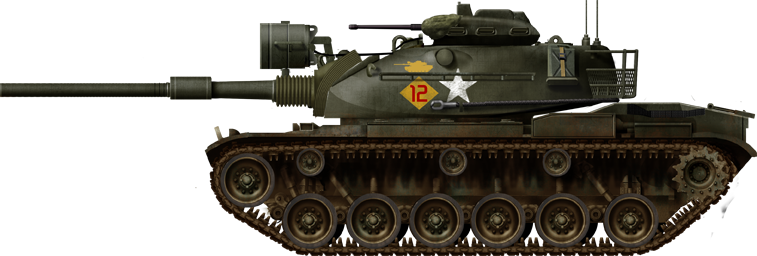

Seen side by side (like below), the two tanks seemed as they were from two different countries. The second was the product of a long reflexion for a true second generation MBT, yet still very much motivated by the Soviet threat. This new model used the British composite armor in a specific way, and the same L7 gun at first, but better sights and many technological breakthroughs. Later the M1A1 shared with West Germany its 120 mm gun. But at the end, it is ironic that, from the avatars left of a common project which ended in cancellation in both countries, resulted in the Leopard II and the Abrams.
M1 Abrams (1978)
Like the contemporary Leopard 2, which took a very similar path at the origin (in fact it was a joint US-German project), the Abrams is a cold war tank, designed to excel by quality whereas the declared Soviet enemy official doctrine always has been to rely on mass effect (“quantity has a quality in itself”, Lenin own’s words).
Light tanks
After the demise of the heavy tank in the early 1960s, the light tanks, however, seemed to be still some usefulness in the US Army arsenal, as proved the mass-produced M41 Walker Bulldog in the 1950s, a replacement for the ww2-era M24 Chaffee. It was better in every way, but too heavy for air transportation and airdropping as first envisioned. Its replacement, the 1969 M551 Sheridan was a strange vehicle that combined aluminum armor and a missile-firing gun for an effective replacement, airdroppable, and had a limited amphibious capability (with a DD system). But it proved a disappointment and was out of service in 1996 right after the gulf war, without replacement.
Infantry Fighting Vehicles
M2 Bradley (1980)

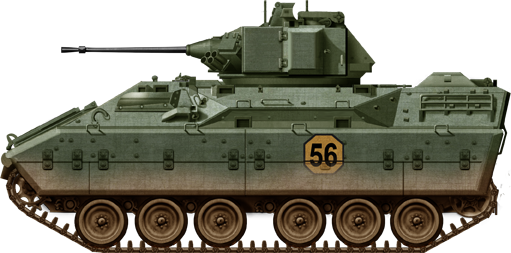
The M2 Bradley was the first American IFV, designed to answer the Soviet BMP and be fast as the M1 Abrams. Numerous compromises led to a long development phase and raising costs which spalled some controversy on the 1980s (see “the pentagon wars”). 4641 were built at $3,166,000 apiece, and due to the cancellation of replacement program in 2009, comprehensive overhauls and modernizations are going to take place instead.
Armoured personnel carriers
M113 ACAV in Vietnam, 1966. The M113 was the best know, most produced of the whole series of vehicles made by the developed by Food Machinery Corp. (FMC). With more than 80 000 vehicles it even exceeded Soviet production figures for their wheeled and tracked APCs altogether.
M44 (1945)
The first “modern” APC or Armoured Personnel Carrier – at least compared to the M3 Half Track. The concept was tried from 1944 with turretless tanks pushed back into service as improvized APCs. The M44 (T16) was developed at the end of the war. It was revolutionary, with all the trademarks of modern APCs but its size. It could carry 24 infantrymen and their equipment and was extensively tried at Fort Knox and Aberdeen Proving Grounds in 1946, but ultimately rejected by the Army arguing the fact it was too heavy and oversized for a standard platoon (ten men).
M75 (1952)
The M75 was produced by FMC (Food & Machinery Corp.). Before it, the T42/43 by International Harvester Corporation (IHC) was a tracked cargo carrier based on the M24 Chaffee chassis and parts. After many modifications, the T18E1 was eventually released by FMC with rear access doors. The hull was much shortened, but it was still heavily armored (50 mm front). It was powerful and fast with a Continental AO-895-4 6-cyl. gas. 295 hp but like many gasoline-propelled armored vehicles at that time, suffered from limited autonomy. Eventually, the M75 (as standardized) in 1953 was mass-manufactured by the International Harvester Corporation and its subsidiary, 1729 being delivered from 1952 to 1954.
M59 (1953)
The Army estimated that the M75 was just still too heavy and too costly for practical service and sought for an alternative solution. Already the Food Machinery and Chemical Corporation (FMCC) took part in the production of the M75 and had its own design in mind. The Army asked the direction to seek an amphibious, but simpler and cheaper design overall. Indeed, the T59 was found acceptable in tests and was standardized as the M59 and produced from 1953 to 1960. However, it was still perfectible. It was still too heavy for air transportation, and its twin commercial trucks arrangement, although cheap and easy to maintain proved not adaptable to military stress and were not a reliable configuration overall.
M113 (1961)
The FMC took its copy again already in the 1950s and started to search for a solution to meet all specifications, in protection, speed, and weight, allowing the vehicle to be both amphibious and air-transportable. The breakthrough came with an association with specialists in high tensile aluminum alloys. The result was an amazing success and innovative solution. Retrospectively it was really a landmark in APC design, with 80,000 vehicles built, more than any other APC to date. It proved also extremely versatile and eventually was declined into a very large family of specialized armored vehicles, from IFVs to minelayers, radar pickets to ARVs, supply carriers or SPAAGs and SPAAMLs…
SPAAGs
M42 Duster SPAAG (1952). One of the earliest dedicated American SPAAG, the M42 Duster was based on the M41 Walker Bulldog light tank chassis. Fast and agile, it was given a twin 40 mm M2A1 mount (2×120 rpm), guns which were derived from the ww2 model mounted abroad most navy vessels and well-proven for its durability and accuracy. It was introduced to the Korean war, replacing the older M19 GMC AA developed on the M24 Chaffee in 1953 and rapidly proved vastly superior. In total, about 3700 were built, and despite its production was stopped in 1958, many were still in use with much success due to its versatile nature and massive firepower against the Viet-Minh and Viet-Cong in the 1960s.
US Forces/USMC cold war sources & related links
US armour on Wikipedia (generic)
US Army command in Germany (USAREUR)

Cold War Tanks


































Cold war tanks posters

Cold War Main Battle Tanks

Cold War Soviet Army
Museums, Movies, Books & Games
The Tanks and Armor in pop culture
Tanks and armored vehicles in general are only really grasped when seen first person: The mass, the scale, it's all there. Explore also the way tanks were covered in the movie industry, in books and in video games.Movies:
Best tanks movie on warhistoryonline.com
On imdb.com
On bestsimilar.com/
miltours.com
liveabout.com/
watchmojo.com
Video Games:
pcgamesn.com
historyhit.com
levvvel.com
vg247.com/best-tank-games
mmobomb.com/
alienwarearena.com


